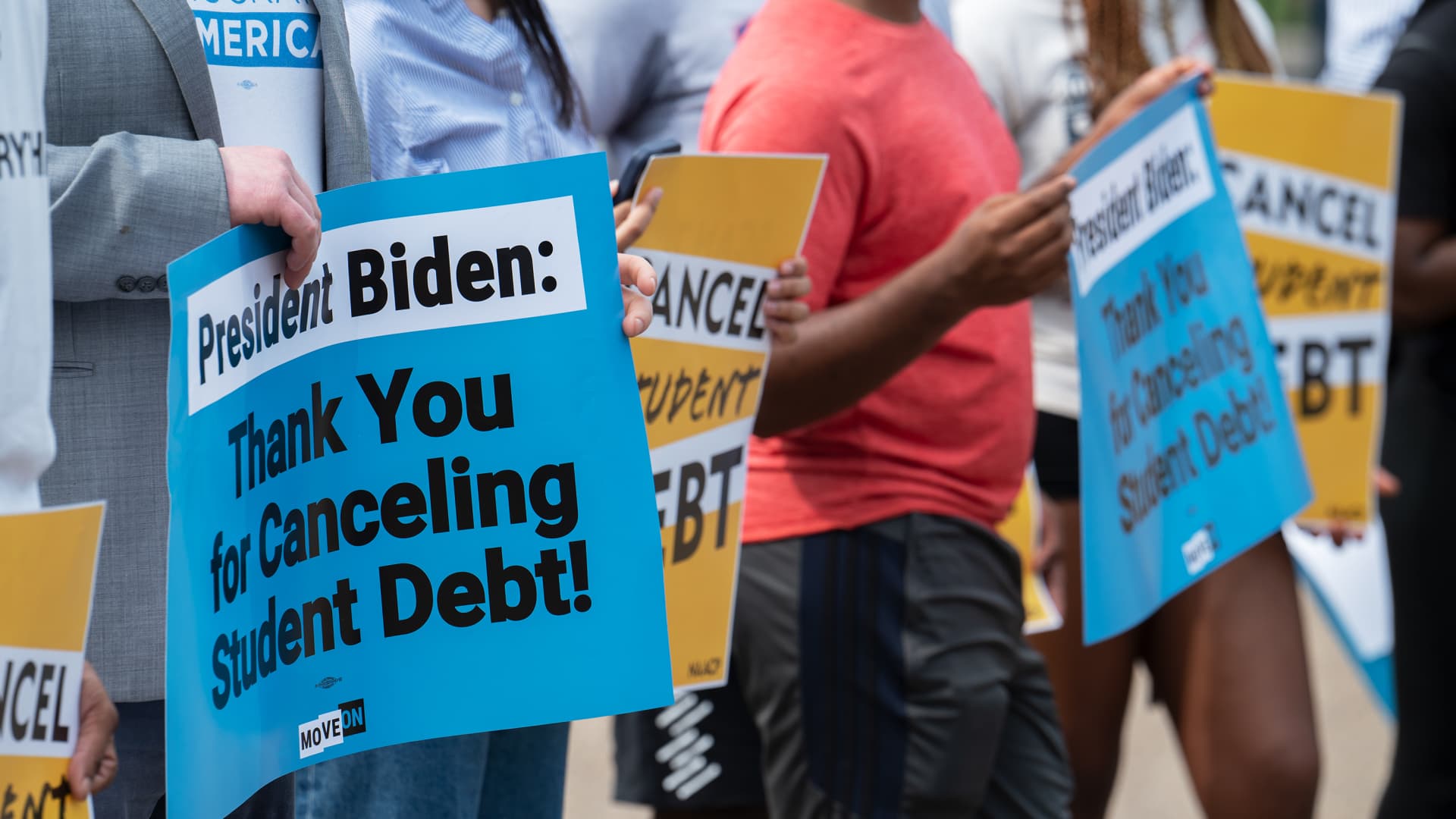Products You May Like
When the U.S. Department of Education announced at the beginning of the pandemic that federal student loan borrowers could put their payments on pause, millions of people were soon unpleasantly surprised to learn they didn’t qualify for the relief.
They were excluded because they owned a subset of federal student loans made before 2010, under what’s known as the Federal Family Education Loans (FFEL) program. These loans were guaranteed by the government but owned by private companies — and since the Education Department didn’t own the debt, its payment pause policy didn’t apply to it.
After President Joe Biden announced last week that he’d be forgiving up to $10,000 for federal student loan borrowers who didn’t receive a Pell Grant, which is a type of aid available to low-income undergraduate students, and up to $20,000 for those who did, there was concern that borrowers with commercially held FFEL loans would be left out yet again. (Borrowers who earn more than $125,000 per year, or married couples or heads of households earning over $250,000, are also cut out.)
More from Personal Finance:
Are your student loans eligible for federal forgiveness? What we know
What President Biden’s student loan forgiveness means for your taxes
‘It’s a game changer.’ Pell Grant recipients react to student loan forgiveness
Fortunately, the Education Department seems to be trying to find ways to avoid that outcome for the estimated 5 million borrowers who have a commercially held FFEL loan.
“The Biden Administration is cutting through red tape and asserting that millions of previously overlooked borrowers will be included in its bold student debt relief plan,” said Ben Kaufman, director of research and investigations at the Student Borrower Protection Center.
Here’s what borrowers need to know.
‘About half’ of FFEL loans are commercially held
The federal government began lending to students on a large scale in the 1960s. Back then, however, it didn’t directly give out student loans. Instead, it guaranteed the debt provided by banks and nonprofit lenders, under the FFEL program.
That program was completely eliminated in 2010, after lawmakers argued that it would be cheaper and simpler to directly lend to students. Nearly 10 million people still hold FFEL loans, according to higher education expert Mark Kantrowitz.
Today, Kantrowitz said, “about half are held by the U.S. Department of Education and about half by commercial lenders.”
There are two reasons the government may now hold FFEL loans. When these loans go into default, the private companies that previously owned them transfer them over to a guarantee agency that services the debt on behalf of the federal government, Kantrowitz said. The other reason is that the government bought back some of the loans during the 2008 credit crisis.
Borrowers eager to know where their FFEL loans are held can go to Studentaid.gov and sign in with their FSA ID. Then go to the “My Aid” tab, and search for your loan details.
Consolidating may help you qualify for forgiveness
If you’re one of the roughly 5 million borrowers with a commercially held FFEL loan, the Education Department tells CNBC that you can call your servicer and consolidate into the Direct Loan Program to benefit from cancellation.
There’s currently no deadline by which borrowers need to do this, a department spokesperson said, but presumably there will be one.
Because all of these developments are so new, your student loan servicer may not yet know about this option, Kantrowitz said.
If you’re running into a wall, it may be better to do the consolidation directly on the StudentAid.gov website, he said. You want to fill out the “federal direct consolidation loan application.”
Consolidation can take a month or more
Generally, it takes between 30 days and 45 days for a consolidation application to be processed, Kantrowitz said.
You should check on the status of your application if you haven’t heard back within that time frame.
Other forgiveness workarounds may be forthcoming
The Education Department will work in the coming months with private lenders to make sure commercially held federal student loan borrowers can also benefit from forgiveness, according to a spokesperson.
These borrowers will have more than a year to apply for the relief once the government’s student loan forgiveness application is available, and they don’t need to take any action now, the spokesperson said.
Payment pause still excludes some FFEL borrowers
Along with Biden’s student loan forgiveness announcement, the president also said he’d extend the payment pause on federal student loans until the end of December.
Unfortunately, borrowers with commercially held FFELs are still left out of this relief, Kaufman said.
